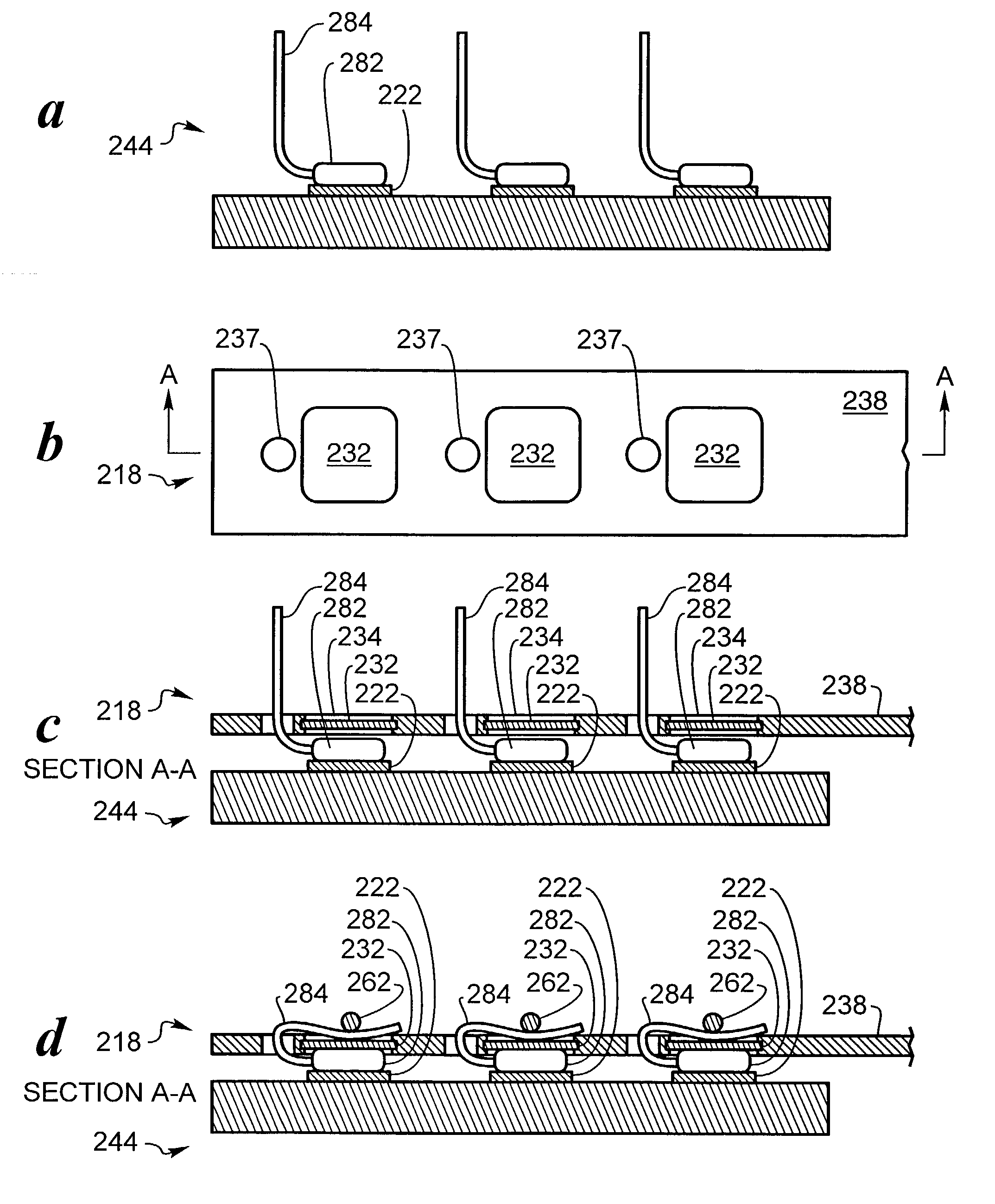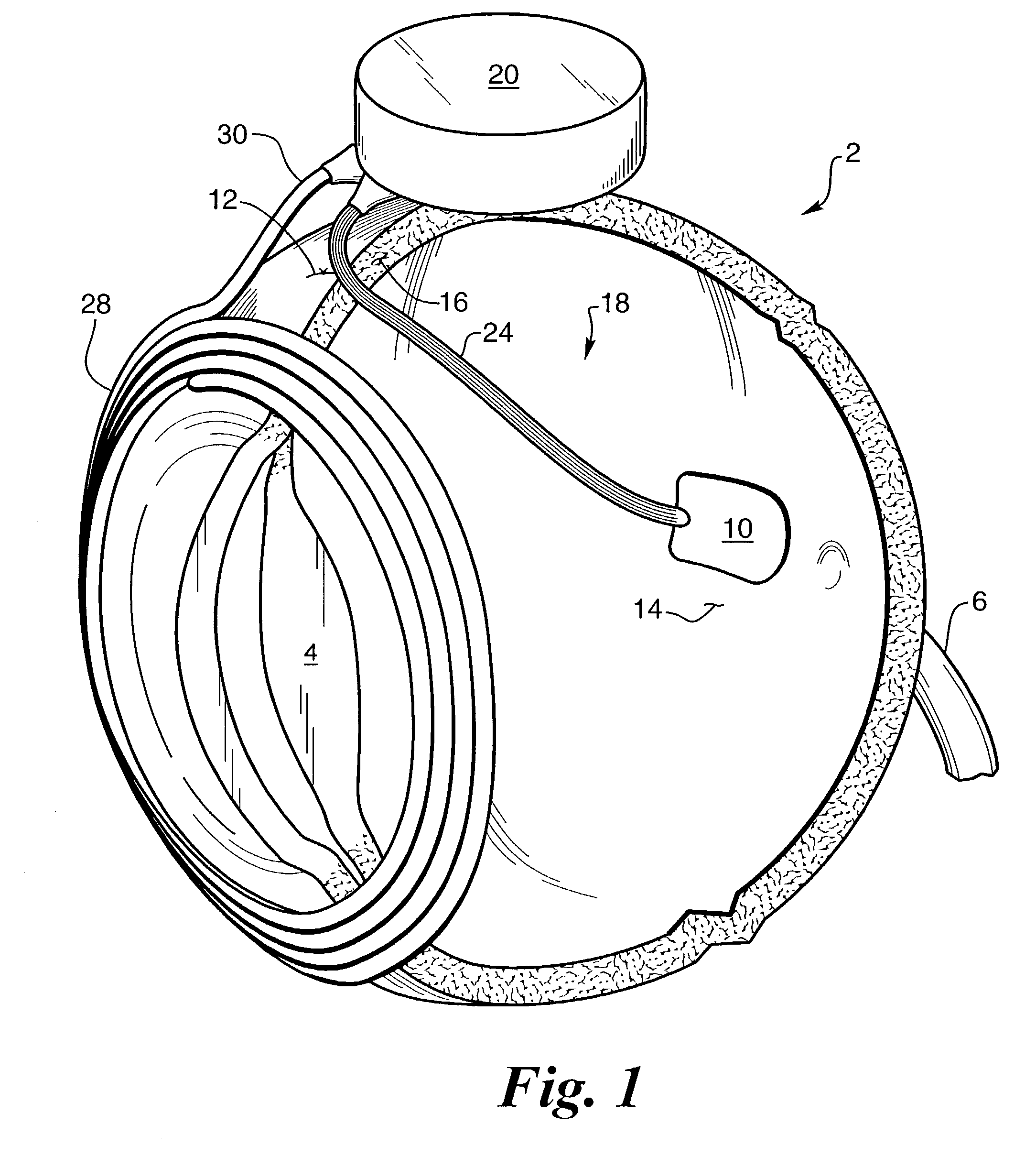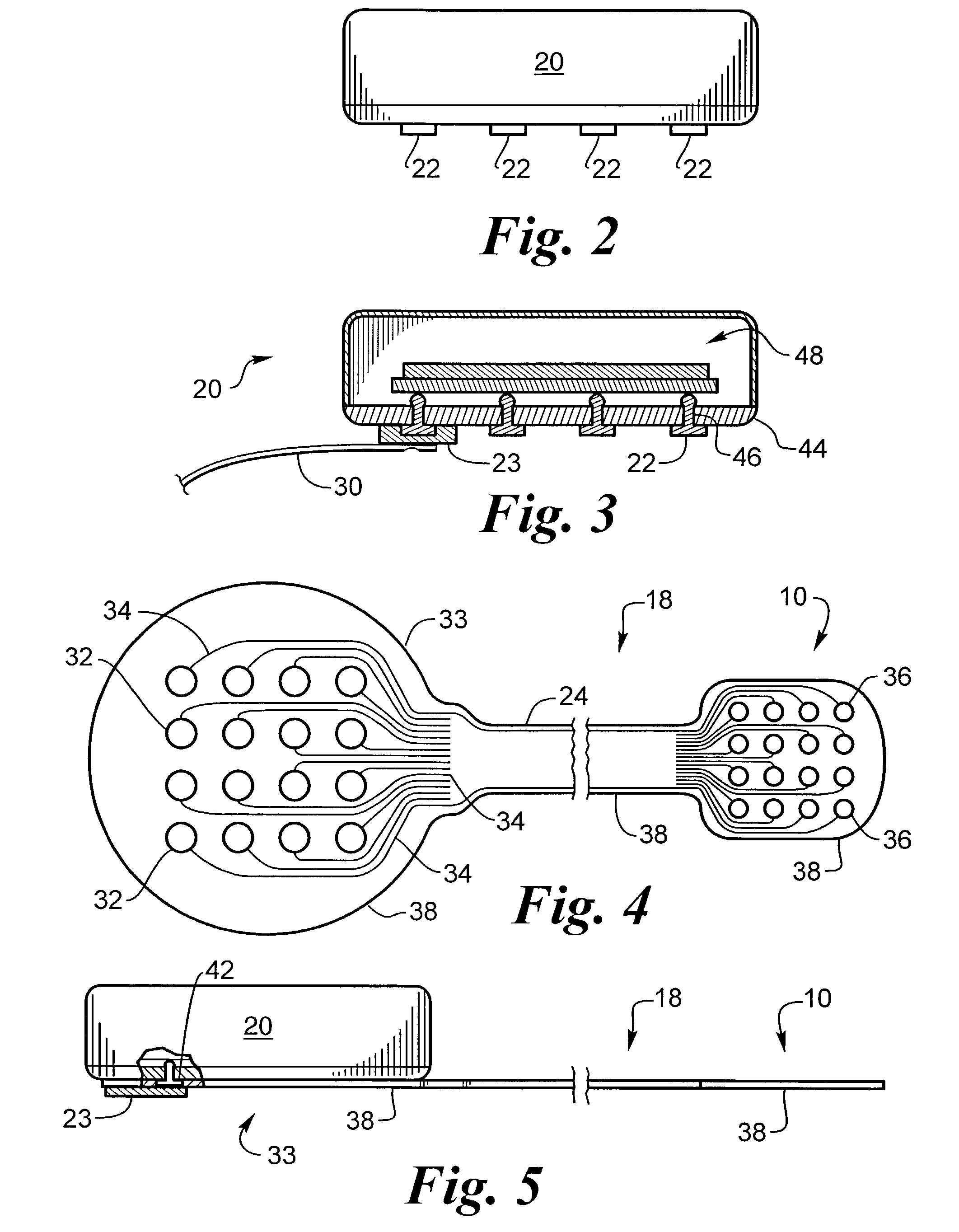Biocompatible bonding method and electronics package suitable for implantation
a biocompatible bonding and electronics package technology, applied in the direction of printed element electric connection formation, semiconductor/solid-state device details, therapy, etc., can solve the problems of biocompatible connection, high number of stimulation electrodes cannot be achieved without sacrifice, and each of these materials has limitations on its use as an implan
- Summary
- Abstract
- Description
- Claims
- Application Information
AI Technical Summary
Benefits of technology
Problems solved by technology
Method used
Image
Examples
example
[0110]A flexible electrically insulating substrate comprised of a first substrate 37 and a second substrate 38 of polyimide having a total thickness of 6 um. It had 700 first substrate holes 57, an equal number of matching bond pad holes 64, and an equal number of matching second substrate holes 59, all in alignment so as to create a continuous hole through flexible assembly 66 that terminates on routing 35, arranged in 100 groups of seven on about 40 um centers, FIG. 4a. The hybrid substrate 44 was alumina and the routing 35 was platinum. The bond pad 63 was platinum.
[0111]The assembly was cleaned by rinsing three times in 10% HCl. It was further prepared by bubbling for 10 seconds at + / −5V at 1 Hz in phosphate buffered saline Finally, it was rinsed in deionized water.
[0112]The electroplating set up according to FIGS. 14 and 15 was comprised of an electroplating cell 400 that was a 100 ml beaker with an electroplating solution level 411 at about the 75 ml level. The solution was 18...
PUM
 Login to View More
Login to View More Abstract
Description
Claims
Application Information
 Login to View More
Login to View More - R&D
- Intellectual Property
- Life Sciences
- Materials
- Tech Scout
- Unparalleled Data Quality
- Higher Quality Content
- 60% Fewer Hallucinations
Browse by: Latest US Patents, China's latest patents, Technical Efficacy Thesaurus, Application Domain, Technology Topic, Popular Technical Reports.
© 2025 PatSnap. All rights reserved.Legal|Privacy policy|Modern Slavery Act Transparency Statement|Sitemap|About US| Contact US: help@patsnap.com



